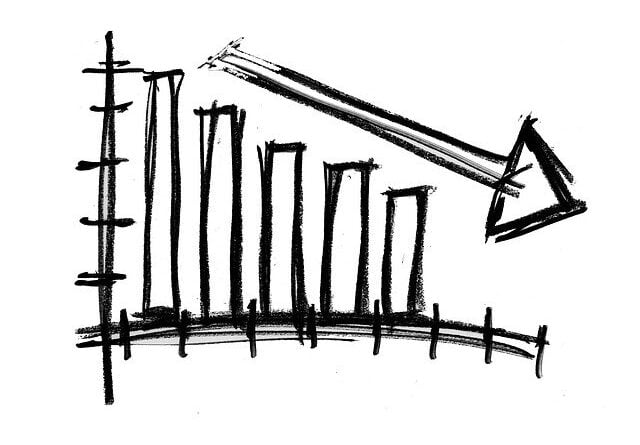Bad Bank
Context:
Bad Bank launched for stressed assets as a measure to clean up bank books
Contents
About Bad banks:
- A Bad Bank houses Bad loans or Non-Performing Assets (NPA). The idea of Bad Bank was implemented in countries like Sweden, Finland, France, Germany, Indonesia etc.
- Even with Bad Bank structure, the Non-Performing Assets (NPA) losses do not go away. It needs to be shared between investors, taxpayers of these banks in general and those of the bad bank.
- A bad bank conveys the impression that it will function as a bank but has bad assets to start with.
- Technically, a bad bank is an Asset Reconstruction Company (ARC) or an Asset Management Company (AMC) that takes over the bad loans of commercial banks, manages them and finally recovers the money over a period of time.
- The bad bank is not involved in lending and taking deposits, but helps commercial banks clean up their balance sheets and resolve bad loans.
- The takeover of bad loans is normally below the book value of the loan and the bad bank tries to recover as much as possible subsequently.
What are the functions of Bad banks?
Commercial and Public Sector Banks (PSBs) sell their NPAs to the bad bank. The bad bank manages the NPAs/bad loans and finally recovers the money over time. The takeover of bad loans is normally below the book value of them. These banks are not involved in activities like lending and taking deposits.
For example, consider a steel plant’s loan with SBI, turned into an NPA. Bad bank purchases this NPA from the SBI. After that, the bad bank appoints domain experts to manage the assets of the plant with an aim to maximize revenues and cut losses. This is called reconstruction and increases the economic value of the plant. When the bad bank sells this plant, it will recover more money.
Origin of Bad Bank Concept
The concept of a bad bank was pioneered at the Pittsburgh-headquartered Mellon Bank in 1988. Bad Bank would set up as a separate entity that would buy the Non-Performing Asset from other banks to free up their books for fresh lending. It is focused on the task of recovery.
A bank may accumulate a large portfolio of debts or other financial instruments which unexpectedly become at risk of partial or full default. A large volume of non-performing assets usually make it difficult for the bank to raise capital, for example through sales of bonds.
In these circumstances, the bank may wish to segregate its “good” assets from its “bad” assets through the creation of a bad bank.
Bad Bank Structure – IBA Proposal
The ‘Bad Bank’ will be a 2 tiered structure.
Tier 1:
- There will be an Asset Reconstruction Company (ARC) backed by the Government which would buy bad loans from banks and issue Security Receipts to the Banks.
- As per RBI guidelines, ARC will hold Security Receipts of 15%.
- Banks will get 15% of the cash and will hold 85% of Security Receipts. Hence it is called 15:85 structure.
Tier 2:
- There will be an Asset Management Company (AMC).
- AMC would be run by public and private bodies which includes banks as well.
- Turnaround professionals.
Need in India:
- Economic Recovery:
- With the pandemic hitting the banking sector, the RBI fears a spike in bad loans in the wake of a six-month moratorium it has announced to tackle the economic slowdown.
- Government Support:
- Professionally-run bad banks, funded by the private lenders and supported by the government, can be an effective mechanism to deal with Non-Performing Assets (NPA).
- The presence of the government is seen as a means to speed up the clean-up process.
- Rising NPAs:
- Financial Stability Report (FSR): The RBI noted in its recent FSR that the gross NPAs of the banking sector are expected to shoot up to 13.5% of advances by September 2021, from 7.5% in September 2020.
- K V Kamath Committee: Noted that corporate sector debt worth Rs 15.52 lakh crore has come under stress after Covid-19 hit India, while another Rs 22.20 lakh crore was already under stress before the pandemic.
- The committee noted that companies in sectors such as retail trade, wholesale trade, roads and textiles are facing stress.
- Sectors that have been under stress pre-Covid include Non-Banking Financial Company (NBFC), power, steel, real estate and construction.
- International Precedents: Many other countries had set up institutional mechanisms to deal with a problem of stress in the financial system.
Disadvantages for establishing bad banks
- No takers: When there are no takers for bad assets, so why have a bad bank;
- Fire Sale Externality: The regular bank usually transfers the toxic assets to the bad bank at a discounted value. This lowers the market value of similar assets held by other banks. This forces the other banks to liquidate similar assets at lower prices thereby starting a vicious cycle which pushes prices below their fundamentals. This is known as fire sale externality.
- Reduces Bank’s efficiency: If banks become aware that there will always be a bad bank to takeover and manage their toxic assets, then banks will tend to be less careful while granting loans.
- Political Interference: Since toxic assets are held by bad banks, these bad banks are prone to political interferences by politicians supporting the chronic debtors. Unless the legislations creating the bad banks enact provisions to prevent such interferences, the functioning of the bad banks will be seriously jeopardized.
- Huge Costs: Huge costs are involved in the creation and running of bad banks, transfer of toxic assets from the regular bank to the bad bank, restructuring the toxic assets, eventual disposal of the toxic assets etc. Many of these costs can be avoided, if the toxic assets are left with the regular bank itself.
- Tight Fiscal Position: Why waste government resources when the Covid-19 crisis has put tremendous strain on resources. In an economy hit by the pandemic, it is hard to find buyers for distressed assets.
- Price Discovery: The price at which toxic assets will be transferred will not be market-determined and price discovery might not happen properly;
- Multiplicity of Agencies: ARCs are already there for the purpose.
- Lack of skilled staff: Sufficient number of skilled and specialized staff that is necessary to actively manage these stressed assets may not readily available. Even if available, engaging them would be a very costly affair.
- Not a Panacea: Creating Bad Bank is like shifting the problem from one head to other without addressing the structural and fundamental issues of NPA.
Advantages for establishing Bad Banks
- Revival of Regular Banks: If there are no takers for the assets, then it makes sense to let domain experts deal with toxic assets till these can be sold. The regular bank after transferring its toxic assets to the bad bank can focus on its long term core operations without worrying about those toxic assets.
- Good-books of stakeholders & agencies: Cleaning up of the balance sheet of the regular bank by transferring the toxic assets to the bad bank will have a positive impact about the regular bank in the eyes of the credit rating agencies, investors, lenders, borrowers and depositors.
- Growth of Business: Transfer of Toxic Assets would enable it to involve itself in profitable/growth oriented business activities.
- Centralization of bad assets: The ownership of the toxic assets and its collaterals are centralized in the bad bank thereby facilitating better management of those assets.
- Speedy Disposal of Assets: The bad bank, which is created as a specialized agency to deal with toxic assets, hires specialized personnel to manage those assets. This helps in the speedy disposal of those assets with minimum loss in the most efficient manner.
- Curbs risks of Failure: The good bank-good bank scheme minimizes contagion risks. Since the toxic assets of the regular bank are removed from its balance sheet and transferred to a new entity, the Non- performing assets of the regular bank are less exposed to risks of failure.
- Better Price Discovery: Price discovery is an important component of the deal and a bad bank is best suited for fixing price. A good bank should make additional provision in case the discovered cost is less than the book value and they want to retain it on its books.
Difference between Bad Bank and ARC (Asset Reconstruction Company):
| Bad Bank | Asset Reconstruction Company |
| A bad bank is simply a corporate structure that isolates liquidity and high-risk assets held by a bank or a financial organisation, or perhaps a group of such lenders. | ARCs are registered with RBI under Section-3 of the Securitisation and Reconstruction of Financial Assets and Enforcement of Security Interest Act, 2002. |
| Bad Banks if established can take over all types of stressed assets | ARCs will only buy those pools of stressed assets if they see business-viability of those pools. |
| Currently the Bad banks are at conceptual stage and yet to be materialized | Currently, there are many licensed ARCs in India |
Source: Live Mint
You can find many articles on ECONOMY (part of GS III) in our website. Go through these articles share with your friends and post your views in comment section.
Discover more from Simplified UPSC
Subscribe to get the latest posts sent to your email.



